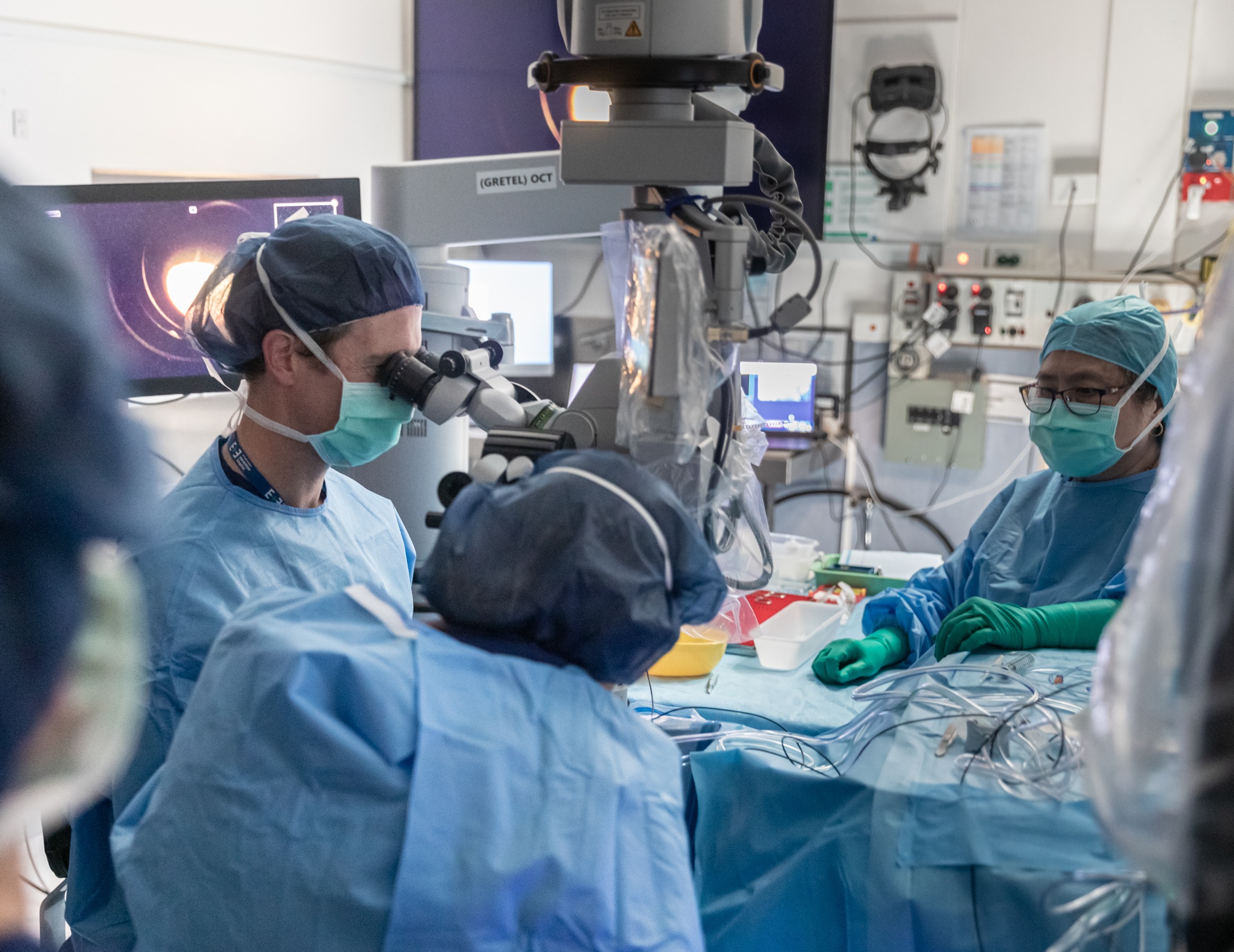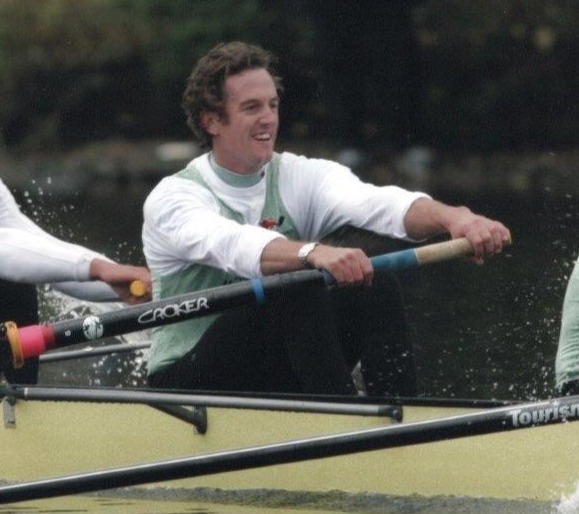There can be few more satisfying moments in medicine than restoring a patient’s vision, particularly if you helped develop the technology behind such an achievement.
Dr Tom Edwards (BMedSc Hons 1999, MBBS Hons 2000) – eye researcher, clinician and surgeon – is a pioneer of three forms of technology that are offering hope to people with previously untreatable blindness. In some cases, such technology is giving them back their sight.
Now a consultant vitreoretinal surgeon based at the Royal Victorian Eye and Ear Hospital and Principal Investigator at the Centre for Eye Research Australia (CERA), he continues to build on groundbreaking postdoctoral research he co-led at the University of Oxford.
Together with Oxford Professor Robert Maclaren, Dr Edwards led the first in-human study of the safety and viability of robotic surgery for use within the eye, led research using electronic retinal implants to restore vision, and conducted the first clinical trials of gene therapy for the inherited retinal condition choroideremia.
Choroideremia affects all retinal layers in the eyes and usually begins during childhood.
“The gene therapy study was the big one … they were exciting times seeing those operations take place,” Tom said.
“Inherited retinal diseases affect 1:3000 people, as a conservative estimate. They are the most common cause of severe vision impairment in working age adults in Australia,” he said.
“While individually the gene mutations are rare, as a group, inherited retinal diseases have a major impact and there has been no treatment for them.”
While still in its early days, with just one gene therapy treatment available to date, Tom describes identifying and correcting defective genes causing blindness as an exciting space to be in.
Last year, he led a clinical trial at CERA in which several Victorian patients received pioneering gene therapy surgery for a form of age-related macular degeneration known as geographic atrophy, for which there is currently no cure.

“Gene therapy is delivered via very, very fine needles, as fine as a human hair, delivered underneath the retina … It’s a first for Australia, so it’s nice to bring that here,” Tom said.
He describes the excitement and satisfaction too of leading electronic implant research while in Oxford.
He witnessed the electronic implants being used for the first time. The patients were blind with end-stage retinitis pigmentosa.
“This was an eight-hour operation, a big deal for people who’ve basically lost all of their vision from inherited retinal disease,” he said.
“It was really rewarding working with these patients and seeing their reaction to being able to see things they hadn’t been able to see for a long time.”
He describes patients picking out the horizon line or seeing cars parked along the side of the road.
“For someone who has got no sight, giving them a bit of vision back, you can have a big impact,” he said.
Dr Edwards’ and Professor Maclaren’s research into robotics for eye surgery presented practical engineering challenges such as how to get the equipment into theatre. Less than a decade later, the research has opened up the potential for new operations that offer supra-human precision, with minimal trauma to surrounding tissue.
“If you wanted to inject a particular medication into one of the retinal vessels, for example, to treat a specific area of the retina, you could potentially do that using robotics,” Tom said.
“It is physically not possible to hold an instrument still enough to do that without the aid of a robot.”
Tom’s postdoctoral research at the University of Oxford was carried out thanks to a Nuffield Medical Fellowship. It followed a PhD at the University of Cambridge, where he rowed in the Oxford Cambridge Boat Race and was President of the Cambridge University Boat Club. He also rowed nationally for Australia and won the Mens’ single scull at the National intervarsity championships while studying medicine at the University of Tasmania, where he was Sports Person of the Year.

time at the University of Cambridge
Hand-in-hand with Tom’s gene therapy focus at CERA is a goal of developing a registry of patients who could potentially benefit from his team’s research.
“It’s very satisfying to make a contribution on both the clinical/surgical side and on the academic front, translating research into clinical practice.
“If you’ve helped develop the technology as well, it’s very rewarding … in research you can develop novel approaches to conditions that haven’t had treatments, and inherited retinal disease is one of these.”
And his recollections about his home State of Tasmania?
“I miss Tasmania and try to visit as often as I can. I have very fond memories of my time at the Medical School and at the Royal Hobart Hospital.
“I live in Melbourne, but Tasmania will always feel like home.”
Written by Katherine Johnson for Alumni Magazine Issue 53, 2022.
Connect with our alumni community to discover more.
Top of page: Dr Thomas Edwards


